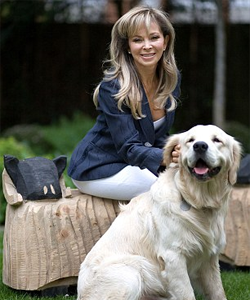How To Train Your Deaf Dog
Train Your Deaf Dog is not nearly as hard as it sounds. In fact, it’s very similar to training a dog that can hear. Dogs rely on a variety of things when you are communicating with them, and they watch your body language as well as listen for your verbal cues. Deaf dogs will rely on your body language and hand signals.
Get the Dog’s Attention
When you are training a deaf dog, you cannot simply call his name to get his attention. While this might be somewhat frustrating, you can do a number of other things instead. Some people choose to use a vibrating collar. This is similar to a shock collar, but it only vibrates instead of shocking the dog when you push a button. You can use this collar to get the dog’s attention, and while you are training, you want to reward the dog with a treat when he responds to the vibration by looking at you.
Other people choose to stomp on the floor or shine a flashlight in the dog’s direction in order to get its attention. No matter what you do, you want to keep it consistent, and you want to reward correct behavior with treats.
Hand Signals
You can easily teach your dog, deaf or not, to respond to hand signals. When it comes to actions, such as sitting, staying, or lying down, you can choose your own signals. Some common ones include making a fist and holding it up in front of your dog for sit, pointing at the ground for lie down, and putting your hand up and palm out toward your dog for stay. You can also say the verbal command for your benefit, and it also helps you communicate the right body language to your dog. Other people also incorporate American Sign Language signs for words like “good,” “toy,” “car,” and “walk.”
at the ground for lie down, and putting your hand up and palm out toward your dog for stay. You can also say the verbal command for your benefit, and it also helps you communicate the right body language to your dog. Other people also incorporate American Sign Language signs for words like “good,” “toy,” “car,” and “walk.”
As with training any dog, it’s important to stay patient and keep training sessions short. For example, you can do two or three 15-minute training sessions each day. If you go much longer, your dog will often lose interest, leading to frustration for you and your dog. Training a deaf dog is different from training one that can hear, but both situations require consistency, patience, and dog treats.






